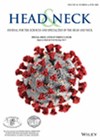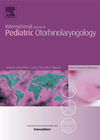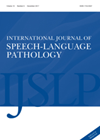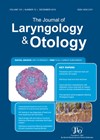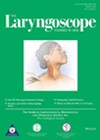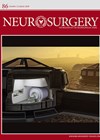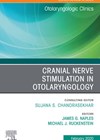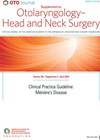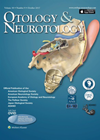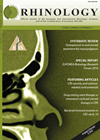
Journal Reviews archive for 2020
Patient reported outcomes following total laryngectomy using the Swallowing Outcomes After Laryngectomy (SOAL) questionnaire
Following a total laryngectomy, alterations in the pharyngeal musculature and changes in the pharyngo-oesophageal segment due to reconstruction, results in altered bolus transit. Swallowing dysfunction after total laryngectomy for head and neck squamous cell carcinoma can vary from 10%-90%. There...
Herpes zoster and SSNHL
Some studies suggest that viral infections may increase the risk of a sudden sensorineural hearing loss (SSNHL). The described longitudinal study explored whether herpes zoster may be a factor that increases the risk of SSNHL. Medical history in reference to...
Cochlear implants in single sided deafness
Whilst the benefit of a second cochlear implant in people with bilateral deafness is well established, the benefits of implantation for single sided deafness with normal contralateral hearing have been much more modest. The reasons for this are varied, in...
What do SLTs do in palliative care?
The authors of this article highlight that the number of older people has increased significantly in the last two decades, and the number of people over 85 has doubled in Australia since 1996. They attribute this to improved lifestyle factors...
Is canal wall down with obliteration a useful compromise between canal wall up procedure and open mastoid cavities?
Controversy has raged for many years between open mastoid cavity procedures and canal wall up techniques in terms of postoperative recidivism and ear discharge. It is generally believed that canal wall up procedures can miss hidden cholesteatoma but preserve useful...
Possible correlation of ABR changes with prognosis in sudden sensorineural hearing loss
A sensorineural hearing loss (SNHL) of 30dB or more affecting at least three frequencies and occurring over less than three days is classified as ‘sudden’ SNHL (SSNHL). Treatment is urgently undertaken with systemic and/or intra-tympanic steroids, and ijn some cases...
Outcomes following endoscopic vs. microscopic ossiculoplasty
Endoscopic ear surgery continues to increase in popularity with an expanding range of applications in otology. The variety of angled scopes allow for superior visualisation of the surgical field and difficult to reach areas. However, use of endoscopes reduce the...
Hearing outcomes after retrosigmoid resection of smaller vestibular schwannomas are better
The authors reviewed published literature reporting hearing outcomes in patients after retrosigmoid (RS) resection of vestibular schwannoma (VS). Aggregate hearing preservation of 31% and 35% under fixed and random models respectively was observed in the 2034 patients meeting eligibility criteria...
Advances in neural stimulation of the auditory pathway
This article reviews the use of neuroprosthetic devices such as cochlear and auditory brainstem implants (ABI) to stimulate the auditory pathway, discussing the successes, limitations and advances in this area. Currently, neuroprosthetic devices deliver electrical impulses to the cochlear nerve...
The association between pregnancy and otosclerosis could be due to psychosocial factors around parenthood rather than biological factors
The association between pregnancy and otosclerosis is controversial. If pregnancy physiologically increases the likelihood of otosclerosis progression, then one would expect that there would be a difference between male and female patients with regards to whether having children affects how...
Minimally invasive surgery vs. linear incision for BAHA – outcomes compared at six months
The postoperative outcomes which are clinically relevant now in bone anchored hearing device surgery have come a long way over the past decade. The newer techniques have meant that previous concerns with skin numbness and cosmesis are now such rare...
Some guidelines for treating rhinological patients during the COVID-19 pandemic
This is a very interesting and informative multinational European guide to the treatment of rhinology patients during the current pandemic, describing the safe delivery of a rhinological service to patients. Much of this has become well understood and standard practice...

